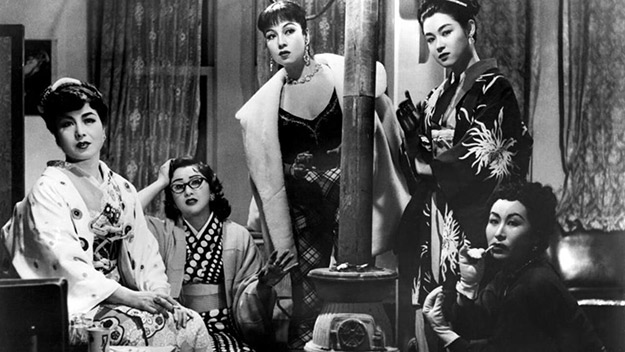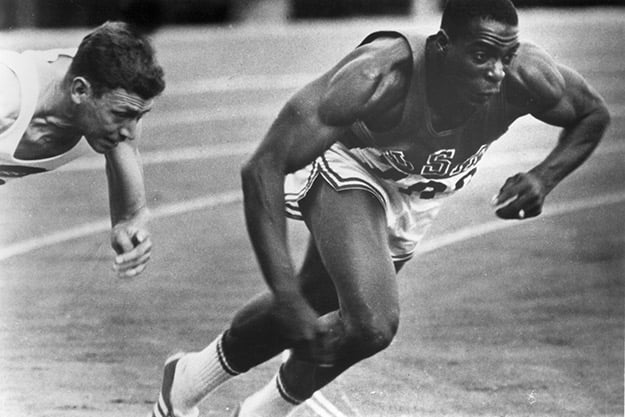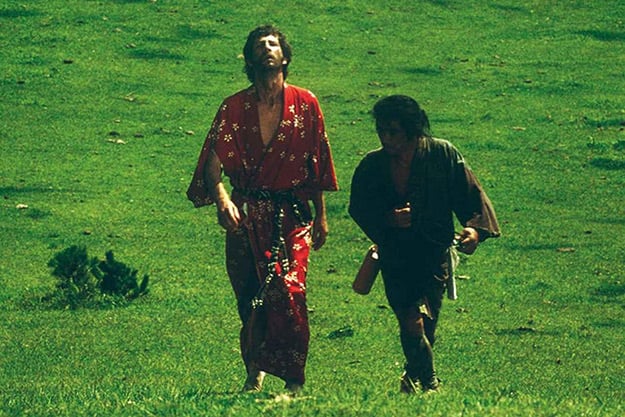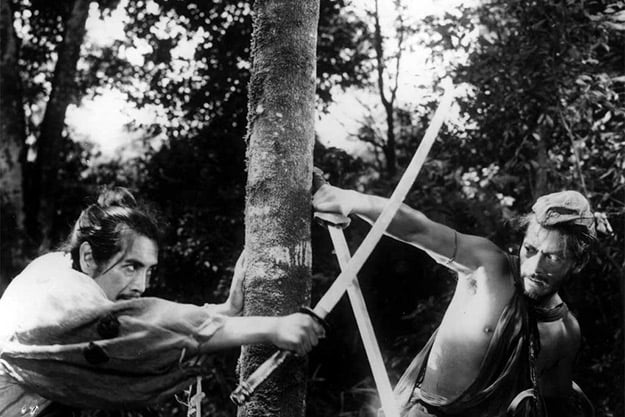Art and Craft: Cinematographer Kazuo Miyagawa
The below extracts are taken from the epilogue of Kazuo Miyagawa’s autobiography Kyameraman Ichidai (One Generation of Cameraman), first published in 1985, four years after his appearance at Japan Society and for the first-ever U.S. retrospective of his works, with over 130 films as Director of Photography under his belt. In the book, Miyagawa provides wonderful insight into his working relationships with some of the most notable directors in Japanese cinema history such as Hiroshi Inagaki (The Rickshaw Man), Akira Kurosawa (Rashomon), Kenji Mizoguchi (Ugetsu), Yasujiro Ozu (Floating Weeds), Kon Ichikawa (Tokyo Olympiad), and Masahiro Shinoda (Silence)—all of whom have at least one work represented in the joint series “Kazuo Miyagawa: Japan’s Greatest Cinematographer” by Japan Society and the Museum of Modern Art.
In this epilogue (translated into English for the first time with the permission of Kazuo Miyagawa’s family) he strikes an optimistic note about the age of electronics and the infinite possibilities of cinema. It becomes clear that throughout his life, he was always interested in innovation and ever-curious about what the young people of the time were up to. These excerpts appear courtesy of the family Kazuo Miyagawa; the translation is by Neo Sora.—Aiko Masubuchi

Street of Shame
“Paint” on Film, “Poetry” through Tone, “Rhythm (Music)” in Camerawork
I feel very fortunate to have worked in the development lab at my company during the first three years there. I chose to be a camera operator in the end, but my experience in the lab became a foundation for my camera operation. If shooting is a soft skill, development is a hard skill. So, you can’t get a great image without familiarity with both. I benefited a lot from knowing both shooting and developing, and this knowledge greatly influenced my shooting techniques.
During the Showa era, when there were no specialized, technical documents to study, there was no other way for a camera operator to learn but to steal techniques from the older generation. But I wanted to develop my own shooting techniques, my own style that only I as Miyagawa possessed. The only way to acquire something like that was to watch and study films. I went and analyzed countless foreign films. Though in those days, camera operators were only technicians who only needed to be the hands, feet, and eyes for the director. A technician didn’t need a voice or a mind.
Encounters with talented directors, or forming new relationships with directors—these are the two things I consciously sought after and established for myself, which is perhaps why I was able to shoot as many as 132 films over 60 years.
…

Tokyo Olympiad
Even in cinema, there are works that are considered classics, or those that have stood the test of time. There are some movies that could only be described as modern even if they were made 40 years ago. What is common among these works is that the creators lived their eras vivaciously, pursuing “something transcendental” in their work. Good works will always last because they always express some kind of unchanging truth or origin. And these works are by-and large created by the sensibilities of the youth. They are created by the power of the youth of the generation.
I have spent 60 years shooting because I love movies so much. However, the job of the cameraman is to become one with the camera and dance with it to capture the subject. In other words, the job requires physical strength. Of course I think that my sensibilities have sharpened beyond my youth and I’ve acquired a “Miyagawa”-style perspective. But there’s nothing I can do about my body.
In that sense, I would love for there to be more and more young people to surpass me. And yet the fact that I still want to continue making films is proof that I am a fool for movies, and nothing else. I’d like to continue, as long as my body allows, to use the camera to paint on film, to bring rhythm and music to camerawork and to continue writing poetry in the tone.
…

Silence
Though systems of technology may change, visual expression will not. A mechanical action cannot create something, especially an image in cinema. A human must create it with heart. Each frame of film has the ingenuity of the crew who poured love and passion into it. The relationship of the crew, who devote themselves to every single frame, is what has supported the artistic nature of cinema until now.
…

Rashomon
I’d like to say one last thing to young people reading this . . . As a person with a long relationship with the movies, I believe we are in a crucial moment in time. Things like electronics will be used to develop new forms of technologies for visual expression. In order to cultivate the ability to adapt to the advancement of technology, I would like everyone to study the fundamentals—images will continue to expand, infinitely.
Aiko Masubuchi is senior film programmer at Japan Society New York.







